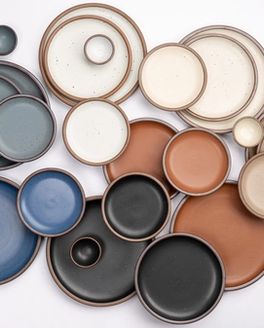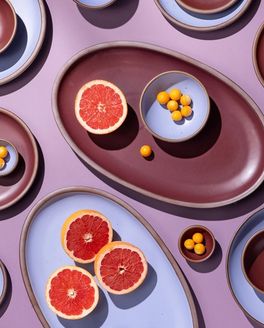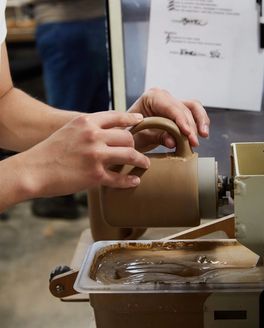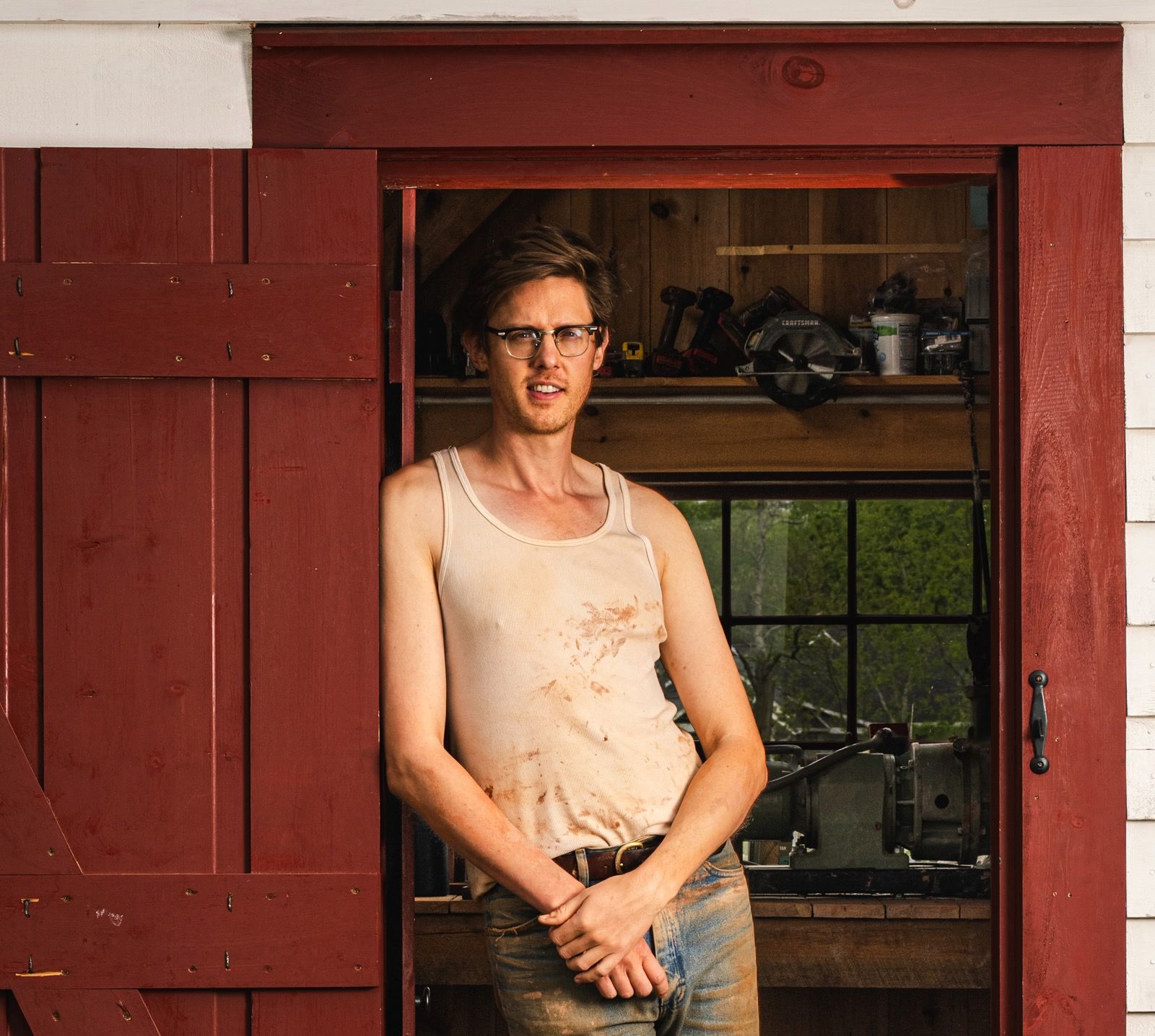
John’s Back at the Wheel
Sometime in 2013, John and I began exchanging a series of letters (hand-written!), exploring the possibility of what it would look like for him to move out to Asheville and make pots with me. We hatched a plan to make work under the East Fork name that I had established a few years earlier. His would get marked with a little typeset V. My maker's mark was an A positioned over an M, handcarved out of a piece of porcelain that I had been using since my first apprenticeship. John always made lovely pots, I knew that well before he moved out here. Tall, graceful, light in the hand and very precisely thrown. Many of them seemed to match his physical stature.
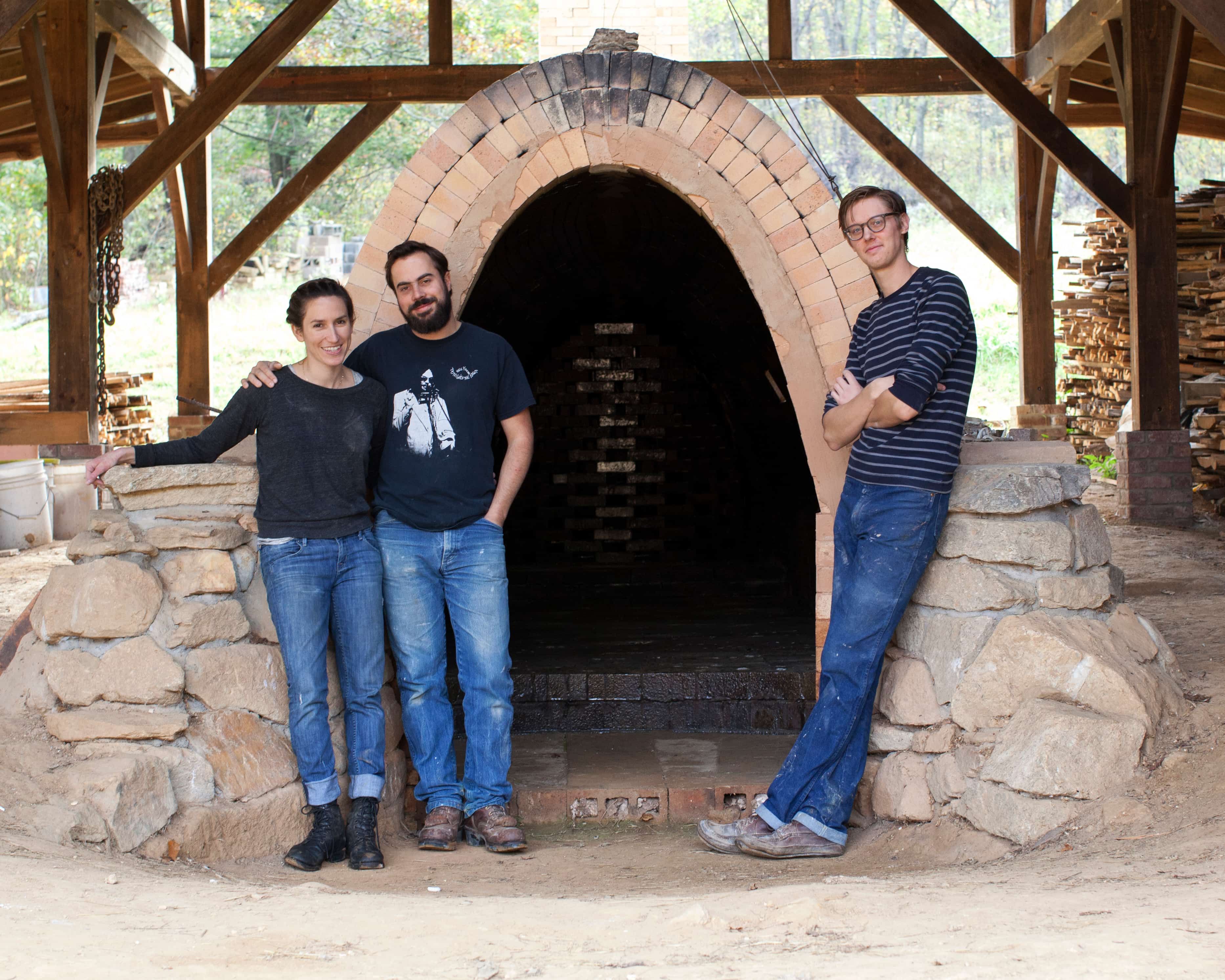
East Fork co-founders Connie Matisse, Alex Matisse and John Vigeland in front of the original wood-fired kiln
In 2015, we all got a wild hair to try something new, and we bought a small gas kiln. The work we made for it eventually caught on, and we never fired the wood-kiln again. When we finally packed up our workshops on the farm and moved into the first “factory,” I don’t think either of us anticipated the fact that our throwing days were about to grind to a halt, but they did.
It was important, though, that East Fork didn’t lose the connection to our origin, and so we tried to maintain some hand-throwing through the years. First it was Cade, then Mike Ball, and now in what I feel is a triumphant return to his original love, this beautiful collection of pitchers thrown by John in his new workshop. It was a joy to walk through the factory and see them sitting on kiln shelves or ware racks, each week a new delivery carefully nestled and delivered in the back of his old Toyota pickup truck. I watched the forms evolve slowly, each one more graceful and elegant than the one that came before it.
Welcome back to the clay, John. We’re glad you made it!
-Alex Matisse, CEO and Co-Founder of East Fork
An Interview with John Vigeland
EAST FORK: How did you develop the form of The Pitcher? And why a pitcher? Is there something about the form specifically that you're drawn to?
JOHN VIGELAND: This is one of the main pitcher shapes that Alex and I learned to make in our apprenticeships. I identify this shape with the pots that Mark Hewitt makes, and I imagine he arrived at this form by digesting his influences: the earthenware pitchers of North Devon and the elegant profiles of Southeastern American jugs among others. My mentor Daniel did a big pitcher project to finance the rebuilding of his wood kiln towards the end of my apprenticeship with him, and I've always wanted to get to make a big run of these ever since. To me they're kinda the ultimate table top-sized pot—getting the quality and proportions of the curves right, executing the profile fluidly, putting a good handle on it—it’s a lot to get right.
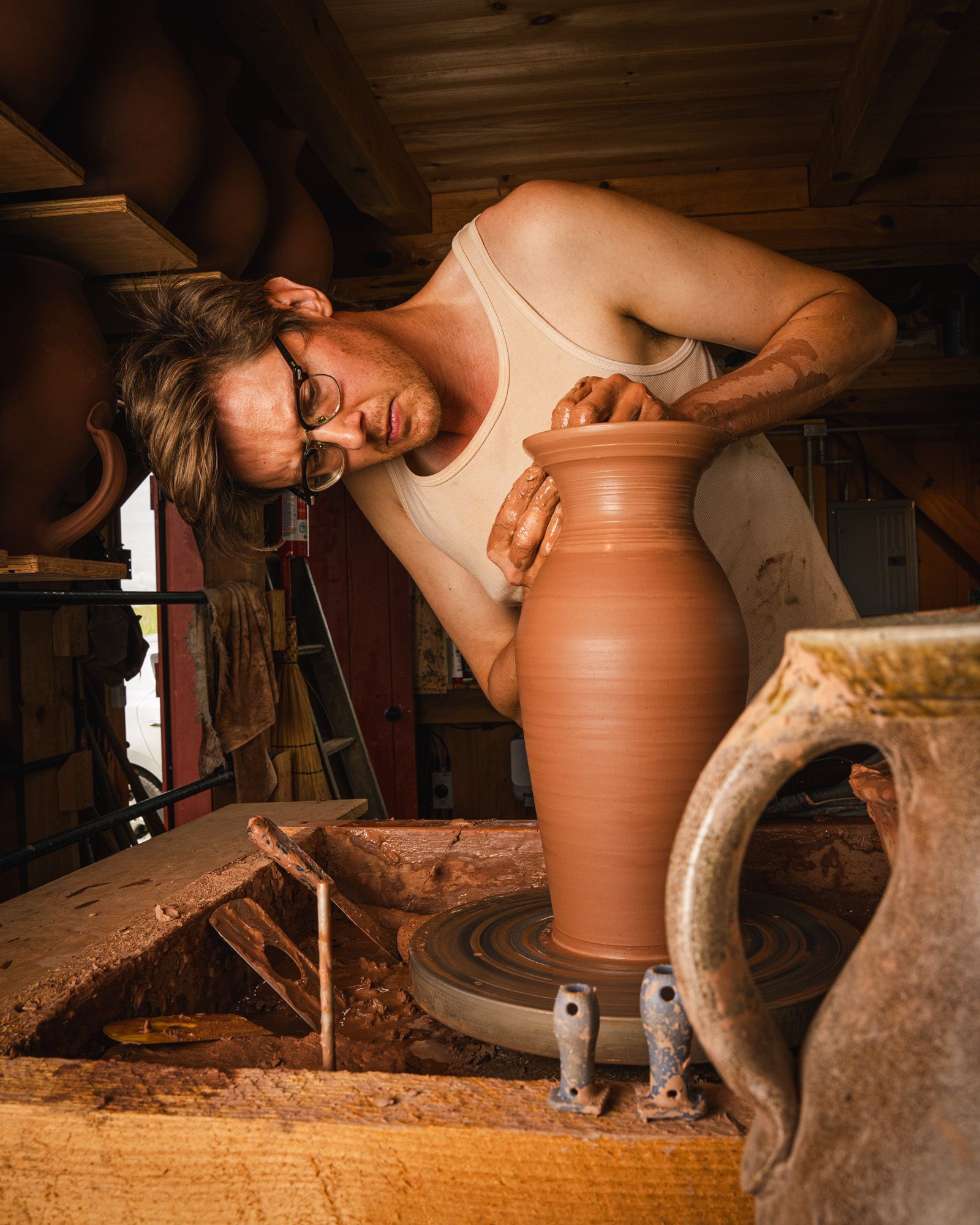
EF: How much time goes into making each pitcher? Can you take us through the process step-by-step?
JV: I have been making them at a rate of 50 a week during this project, which, with a few other to dos on my weekly agenda, is about all I can muster. Maybe we could make a how-to video, but the general process looks like this: take a 4 pound ball of relatively stiff clay, throw a cylinder about as tall as my forearm is long, then rough in the belly of the pitcher with a 6" stiff metal rib and polish up the profile with a softer rubber rib. Clean things up and then pinch in a spout. From centering the clay to taking the pitcher off the wheelhead, it takes me about 10 minutes to throw them. I'll make 25-30 in an 8 hour day (clay prep takes about an hour, and I’ve gotta take a few breaks to stay focused) and then put handles on all of them the next day. On Mondays, I drive last week's pitchers into town to the factory to get bisqued, glazed and glaze fired.
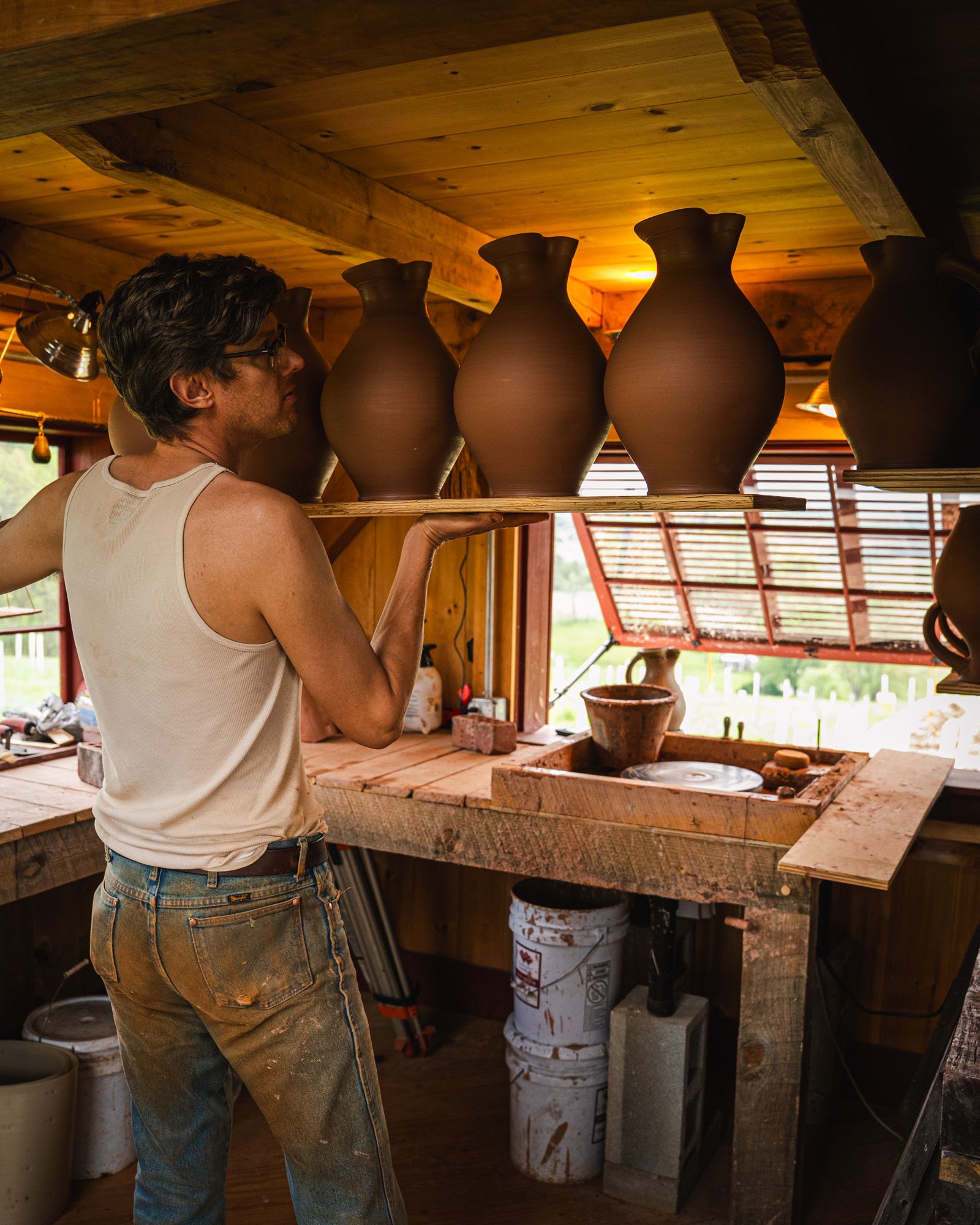
EF: Tell us about your studio. When you were planning the build, what did you know you wanted it to have? Was there a certain feeling you were looking for it to evoke?
JV: Back in 2020, I bought 8 acres of land out in Alexander, about 20 minutes north of Asheville. It is a small piece of what used to be hundreds of acres that a family farmed for 3 generations. My portion is on an old cow pasture/hayfield. I built a small cabin on it bit by bit over a couple years (really just working on the weekends since I was still CFO at the time). I wasn't planning on using it as a pottery studio, but instead was just trying to build for the sake of learning how. I had aspirations of building a big proper studio after I had completed this small cabin. But once I realized how much work it was to build things, I reorganized my priorities and figured out a plan to squeeze a pottery studio into the 200 sq ft of the cabin. It's not the forever solution, but it works for now! Most recently, we just completed the kiln shed that will house the eventual wood kiln. In a fun poetic full circle moment, Raivo Vihman, who built the original East Fork kiln shed out in Madison county with Alex, designed and built this new kiln shed. I admire his work so much--it's a thrill to get to work in one of his buildings.
I think my aesthetic in buildings is probably an extension of my aesthetic in pottery. One thing that drew me to traditional North Carolina pottery in the first place was the material directness of it, and the collective effort of generations evident in its forms. There's a paragraph in an Anni Albers essay that has always stuck with me that gets at this materials directness feeling:
"Civilization seems in general to estrange men from materials, that is, from materials in their original form. For the process of shaping these is so divided into separate steps that one person is rarely involved in the whole course of manufacture, often knowing only the finished product. But if we want to get from materials the sense of directness, the adventure of being close to the stuff the world is made of, we have to go back to the material itself, to its original state, and from there on partake in its stages of change."
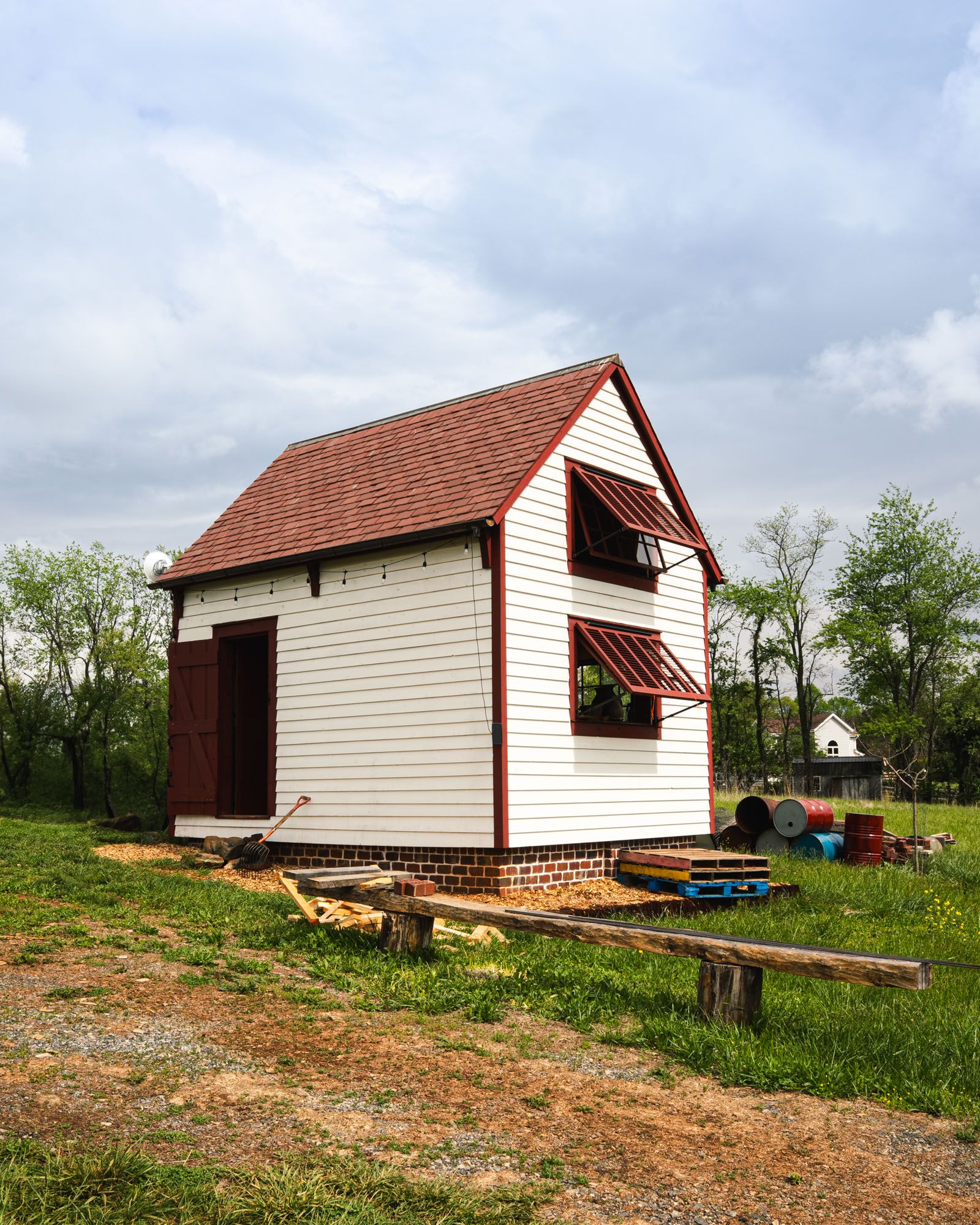
EF: You started throwing East Fork pots 12 years ago. Then, as East Fork grew, you became our CFO. What has the journey from potter to CFO and back to potter been like for you?
JV: I'm in the process of digesting this most recent chapter currently. I feel like I'm going to have to figure out something smart to say about the nature of handmade craft in the context of an industrialized economic system at some point, given the journey we've been on, but I don’t have anything yet. It feels right to be coming back to making pots though: I think I've burned away some of the anxious, I-need-to-prove-myself energy I had a lot of in my 20's, so making work now feels a little more patient and considerate. I'm excited to see where things take me.
EF: What is your origin story with pottery? Can you tell us about how you got into it and met Alex?
JV: I studied art in college, and as a part of that got introduced to wheel throwing in my last year. Right before I graduated, I came across an article in a magazine about Mark Hewitt, a potter in North Carolina who took apprentices. That model of learning really tickled my fancy, so I asked around about opportunities to be an apprentice and through some lucky timing, got a job working for Daniel Johnston, one of Mark's earlier students. Alex was just finishing up his apprenticeship with Mark when I was starting mine with Daniel so we met through our pottery lineage. I think we first met when Alex and Connie came down to Seagrove for dinner at Daniel's place.
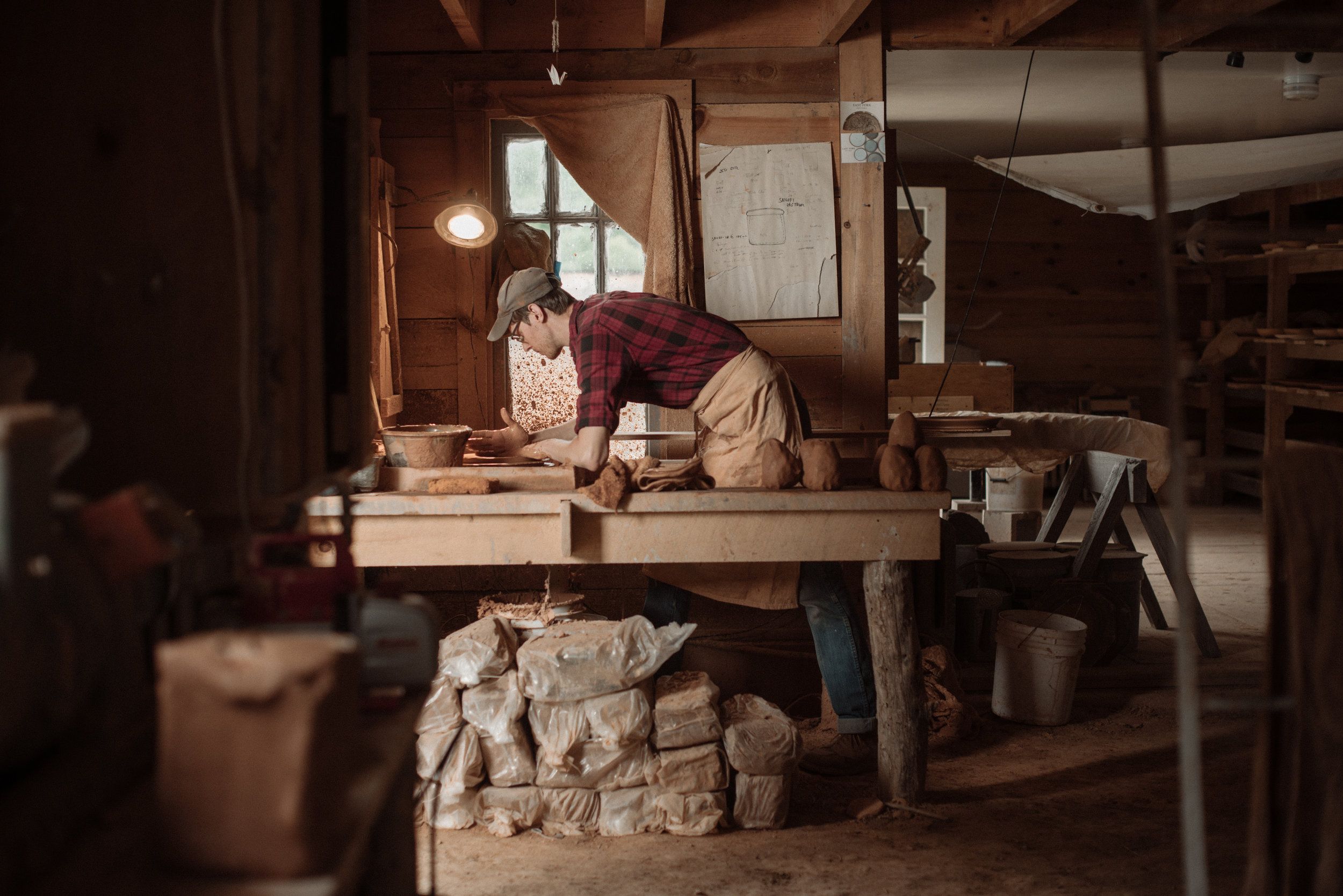
EF: What has your return to throwing pottery for East Fork Workshop been like for you?
JV: I'm glad we've hung onto some element of hand throwing throughout our whole journey, but it hasn't always been easy to fit it in alongside the factory production. All of the factory processes are so fine tuned, when we introduce one-off pieces that are hand thrown into that environment, it inevitably makes for some friction: kiln capacity constraints, new flaws unique to hand thrown items, altered glaze application methods, etc. So prior to the storm, Alex, Mike Ball and I were starting to work on a new line of hand thrown pots that we could make completely separate from the normal factory workflow in a small electric kiln we had at the Fairview site. So I was having a fun time designing new clay/glaze combos for the electric kiln and new forms, and we had settled on this nice toasty red slipware look that we were going to introduce in the holiday season of 2024. But Helene completely flooded the Fairview location and destroyed the electric kiln we were using. I would love to get back to that electric-fired line one day, but for now I'm excited to be making pots in normal factory glazes. I think the pitchers look nice and cohesive with our factory pots this way, whereas the electric line was more of a standalone.
